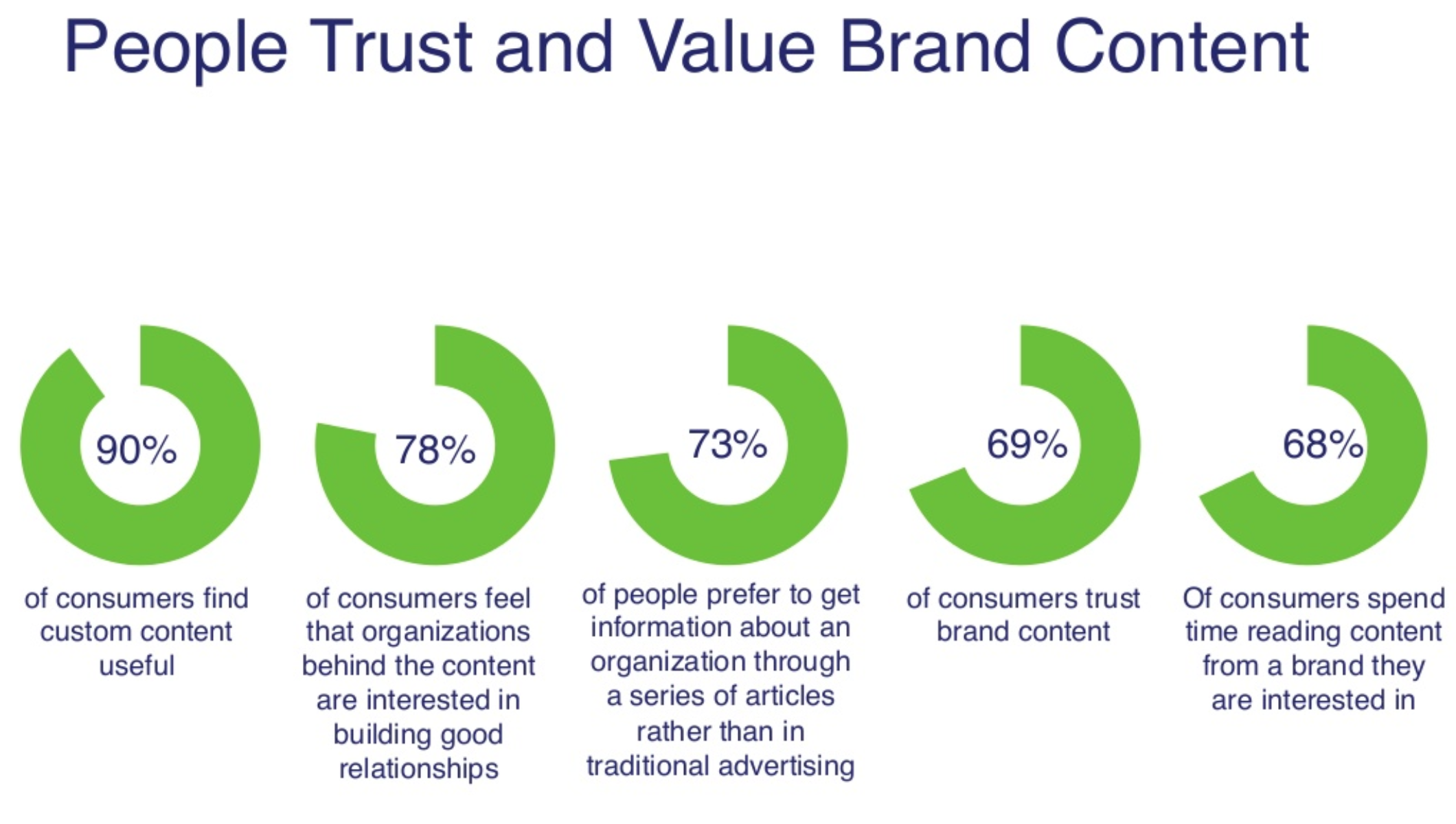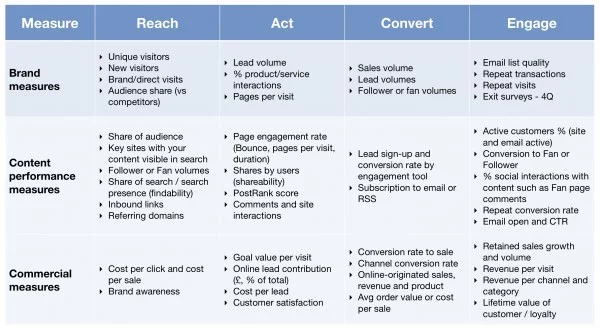It’s often quite an uphill battle for startups to capture buyers’ attention in the crowded marketplace, drive high-quality traffic to their websites, and convert visitors into buyers. More and more successful brands, including startups and small businesses, are using content creation to generate leads and convert sales.
What can you do to get in front of more prospects without spending an arm and a leg on advertising and mass media?

You can’t afford to ignore this tried-and-true strategy that will help you build a following and grow your business.
Content Marketing For Startups
According to the Content Marketing Institute, “content marketing is a strategic marketing approach focused on creating and distributing valuable, relevant, and consistent content to attract and retain a clearly defined audience — and, ultimately, to drive profitable customer action.”
Content marketing is a cost-effective way to connect with your audience at every stage of the customer lifecycle – from brand awareness and lead generation to closing the sale and cultivating advocacy.
It allows you to reach prospects with a very targeted strategy and increase the ROI of your marketing efforts without a large upfront investment or overhead.

In addition, content marketing is very scalable, so you can start small and grow your team as the business gains traction.
Even if you haven’t thought much about this marketing methodology, you have probably come across strategies in which content plays an important role.
For example, search engine marketing, email marketing, inbound marketing, account-based marketing, and social media marketing all rely on sharing and promoting relevant and useful content to drive traffic and generate sales.
Without high-quality content as the foundation, you won’t be able to maximize the ROI of these strategies.
However, it could be overwhelming to get started on content marketing. You need to hone in on many moving parts to get the best results.
Thankfully, all the different tactics are built on one solid foundation.
When you have a clear understanding of your audience and how they interact with your brand, you can deliver the right message to the right people at the right time.
In this article, we’ll look at the components of this solid foundation to help you create a content strategy that works for your startup business.
Define Content Objectives
Before you jump into writing, you need to get clear on what you want to achieve and how to measure success so you can position your content strategically.
Your content marketing strategy should fit into your overall marketing plan to help achieve your business goals.
In addition, when you’re able to measure the effectiveness of your strategies, you can test and fine-tune the approach to optimize results.
After you have identified your goals, define the key performance indicators (KPIs) and set numeric goals to be accomplished within a specific time frame.

Some of these KPIs include traffic source, unique visitors, bounce rate, social shares, lead generated, sales revenue, email click-through rate, engagement rate, and customer lifetime value.
Although there are many KPIs you can measure, focus on improving a few that are most pertinent to the stage your business is at.
For example, if you have a SaaS business, you may focus on the number of leads generated and the percentage of those leads that convert into paying customers.
Create Buyer Personas
Many startups try to appeal to everybody and end up spreading themselves too thin.
To effectively utilize your resources, target a specific audience so you can attract high-quality leads, drive the right traffic to your website, and maximize ROI.
Start by creating a series of buyer personas to hone in on your audience segments.
Buyer personas are fictional, generalized representations of your ideal customers.
They provide insights into your audience’s demographics, psychology, interests, preferences, and behaviors, as well as challenges and desired outcomes related to your products or services.
There are many ways to gather information to build your buyer personas, such as interviewing or surveying your prospects and customers, recruiting interviewees through third-party networks, and through social listening.

Understand Customer Lifecycle
A buyer persona experiences and interacts with your brand differently as he progresses through the decision-making process.
To effectively deliver the right content at the right time, you need to understand how the persona’s thoughts and behaviors map to the different stages of the customer lifecycle.

At the awareness (or discovery) stage, your prospects are looking for solutions to their challenges. They’d mostly come across your information through online searches. Relevant and helpful content optimized for search engines can be used to drive traffic, build an audience, and capture leads.
During the consideration stage, your audience is becoming familiar with your brand. Continue to build trust and nurture relationships with them by sharing valuable content. You can also provide more information on how your products or services offer the best solution to their challenges.
At the purchase stage, your content should offer the necessary information to help your audience make the best purchasing decision. You can use social proof, such as user-generated content and testimonials, to add credibility.
The retention stage is particularly important for businesses that generate a good portion of revenues from recurring sales or subscription models. Your content should build customer loyalty and help users get the most value out of your products.
Plan With Content Map and Content Calendar
By combining the buyer personas with customer lifecycle stages, you can map out the appropriate topics, formats, and distribution channels to determine how to get the right message in front of the right people in the right place and at the right time.

Based on the information on your content map, you can then create a content calendar to guide your efforts.
Your content plan should align with your overall marketing calendar to ensure that it’s supporting other marketing initiatives.
In addition, consider holidays, special events, and seasonal topics so you can drive traffic with timely content.
Your content calendar can go beyond just a list of dates and topics to become the “command and control” center for managing your content production and distribution.
To do so, integrate the content calendar with your project management tool to make sure everyone in your team has access to the information.
Devise a Content Promotion Strategy
The most successful content marketers spend 20% of their time creating content and 80% of their time promoting it.
Experiment with different strategies and track results so you can identify the most effective ways to promote your content.
You can share content via email marketing, social media marketing, search engine optimization, paid online advertising, syndication, and influencer outreach.
Besides finding the right outlet, you also need to write compelling headlines tailored to each specific channel and audience segment so you can capture attention and increase your click-through rate.
Keep in mind that content marketing is a long game. It takes time to accumulate content and build your website’s “SEO juice” that’ll get your site ranked in organic search results.
Since it takes time to build organic traffic, you may have to invest more in paid ads to drive traffic and build traction at the beginning.
Build a Team to Scale Up
During the startup stage, you probably don’t need to hire a team of full-time employees to manage your content.
That’s where all the strategic documents come in handy. The clear directions will allow you to onboard freelancers quickly and effectively delegate the tasks.
You can streamline the content production process by using a freelance writer platform that connects you with high-quality writers and offers a built-in process to manage scoping, workflow, and payment.
Even when your business grows, you may still want to work with freelance writers as they allow you the flexibility to scale up or down without having to worry about hiring or overhead.
You should also start building out some critical roles in your content marketing team.
In the beginning, you’d likely have one person wearing many hats to cover the roles of strategist, editor, SEO/analytics expert, and community manager.
Regardless of the number of team members, you need a project management process to ensure that nothing falls through the crack.
Besides establishing a system and a set of guidelines, you should have a communication platform for general information sharing (e.g., Slack,) a project management tool to facilitate workflow (e.g., Trello,) and a centralized location for sharing strategy documents, editorial guidelines, and templates (e.g., Google Drive.)
In addition, create a standard operating procedure (SOP) to ensure that everyone in your team understands what’s expected of the process and their roles.
Final Thoughts: Executing an Effective Content Marketing Strategy
Content marketing is essential in building brand awareness, generating leads, nurturing relationships with your prospects, closing sales, retaining customers, and building advocacy.
With the fast-evolving marketing technologies available at our fingertips, it’s easier now than ever to manage your content marketing efforts.
Don’t forget to leverage these technologies to test and track your strategies so you can fine-tune your tactics and maximize your ROI.
Don’t wait: the sooner you start creating content, the sooner you start banking “SEO juice” for your website!
